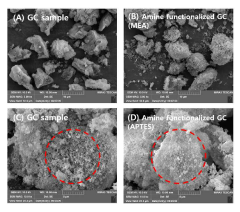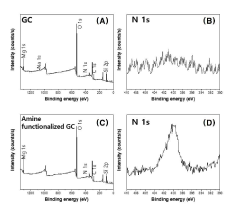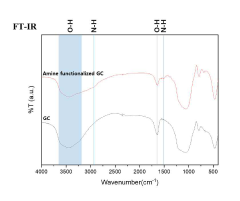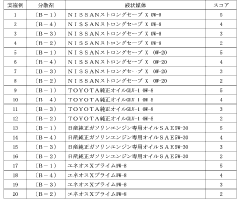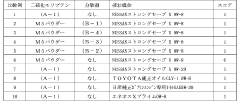Dispersion techniques for Magnesium silicate hydroxide in lubricants.
JUL 17, 20259 MIN READ
Generate Your Research Report Instantly with AI Agent
Patsnap Eureka helps you evaluate technical feasibility & market potential.
Magnesium Silicate Hydroxide Dispersion Background
Magnesium silicate hydroxide, also known as talc, has been a subject of interest in the lubricant industry for decades. This naturally occurring mineral has unique properties that make it valuable as an additive in various lubricant formulations. The history of using talc in lubricants dates back to the early 20th century when researchers began exploring its potential to enhance the performance of greases and oils.
The primary challenge in utilizing magnesium silicate hydroxide in lubricants has always been achieving proper dispersion. Due to its hydrophobic nature and tendency to agglomerate, talc particles often form clumps or settle out of suspension, reducing the effectiveness of the lubricant. This issue has driven continuous research and development efforts to improve dispersion techniques.
Early dispersion methods relied on mechanical processes, such as high-shear mixing and ball milling. While these techniques provided some improvement, they were often energy-intensive and yielded inconsistent results. As the understanding of surface chemistry advanced, researchers began exploring chemical modification approaches to enhance talc's dispersibility in lubricant bases.
The 1960s and 1970s saw significant progress in the development of surfactants and dispersants specifically designed for talc. These additives helped to reduce the surface tension between talc particles and the lubricant medium, leading to improved stability and performance. However, the effectiveness of these early dispersants was often limited by their thermal and chemical stability in harsh operating conditions.
In recent years, the focus has shifted towards more advanced dispersion techniques. Nanotechnology has opened up new possibilities, with researchers exploring the potential of nano-sized talc particles and novel surface treatments. These approaches aim to increase the specific surface area of talc and improve its interaction with the lubricant matrix.
The drive for improved dispersion techniques is fueled by the numerous benefits that well-dispersed magnesium silicate hydroxide can bring to lubricants. These include enhanced wear protection, improved thermal stability, and reduced friction. Additionally, talc's ability to act as a viscosity modifier and its potential to replace more environmentally harmful additives have made it increasingly attractive in the context of sustainable lubricant formulations.
As environmental regulations become more stringent and the demand for high-performance lubricants grows, the importance of effective dispersion techniques for magnesium silicate hydroxide continues to increase. This has led to a renewed interest in research and development in this field, with both academic institutions and industry players investing in innovative solutions to overcome the longstanding challenges of talc dispersion in lubricants.
The primary challenge in utilizing magnesium silicate hydroxide in lubricants has always been achieving proper dispersion. Due to its hydrophobic nature and tendency to agglomerate, talc particles often form clumps or settle out of suspension, reducing the effectiveness of the lubricant. This issue has driven continuous research and development efforts to improve dispersion techniques.
Early dispersion methods relied on mechanical processes, such as high-shear mixing and ball milling. While these techniques provided some improvement, they were often energy-intensive and yielded inconsistent results. As the understanding of surface chemistry advanced, researchers began exploring chemical modification approaches to enhance talc's dispersibility in lubricant bases.
The 1960s and 1970s saw significant progress in the development of surfactants and dispersants specifically designed for talc. These additives helped to reduce the surface tension between talc particles and the lubricant medium, leading to improved stability and performance. However, the effectiveness of these early dispersants was often limited by their thermal and chemical stability in harsh operating conditions.
In recent years, the focus has shifted towards more advanced dispersion techniques. Nanotechnology has opened up new possibilities, with researchers exploring the potential of nano-sized talc particles and novel surface treatments. These approaches aim to increase the specific surface area of talc and improve its interaction with the lubricant matrix.
The drive for improved dispersion techniques is fueled by the numerous benefits that well-dispersed magnesium silicate hydroxide can bring to lubricants. These include enhanced wear protection, improved thermal stability, and reduced friction. Additionally, talc's ability to act as a viscosity modifier and its potential to replace more environmentally harmful additives have made it increasingly attractive in the context of sustainable lubricant formulations.
As environmental regulations become more stringent and the demand for high-performance lubricants grows, the importance of effective dispersion techniques for magnesium silicate hydroxide continues to increase. This has led to a renewed interest in research and development in this field, with both academic institutions and industry players investing in innovative solutions to overcome the longstanding challenges of talc dispersion in lubricants.
Lubricant Market Demand Analysis
The global lubricant market has shown steady growth in recent years, driven by increasing industrialization, automotive production, and machinery usage across various sectors. The demand for high-performance lubricants, particularly those incorporating advanced additives like magnesium silicate hydroxide, has been on the rise due to their superior properties and environmental benefits.
In the automotive sector, which accounts for a significant portion of lubricant consumption, there is a growing need for lubricants that can enhance fuel efficiency and reduce emissions. This trend aligns well with the properties of magnesium silicate hydroxide, which can improve the thermal stability and anti-wear characteristics of lubricants. As vehicle manufacturers strive to meet stringent environmental regulations, the demand for such advanced lubricant formulations is expected to increase.
The industrial machinery segment also presents a substantial market opportunity for lubricants containing magnesium silicate hydroxide. With the expansion of manufacturing activities in emerging economies and the adoption of advanced machinery in developed nations, there is a rising demand for lubricants that can withstand high temperatures and pressures while providing excellent lubricity. Magnesium silicate hydroxide's ability to enhance these properties makes it an attractive additive for industrial lubricants.
In the marine industry, there is a growing focus on environmentally friendly lubricants due to stricter regulations on marine pollution. Magnesium silicate hydroxide's potential to improve the biodegradability of lubricants while maintaining performance makes it a promising additive for this sector. As shipping companies seek to comply with environmental standards, the demand for such eco-friendly lubricant solutions is likely to increase.
The energy sector, particularly in oil and gas exploration and production, requires lubricants that can perform under extreme conditions. The ability of magnesium silicate hydroxide to enhance the thermal stability and load-bearing capacity of lubricants makes it suitable for these demanding applications. As energy companies continue to explore challenging environments, the need for high-performance lubricants incorporating such additives is expected to grow.
Market analysis indicates that the Asia-Pacific region is likely to be a key growth driver for lubricants containing magnesium silicate hydroxide. The rapid industrialization, increasing automotive production, and growing awareness of environmental issues in countries like China and India are contributing to this trend. North America and Europe, while mature markets, are also showing interest in advanced lubricant formulations, driven by the need for improved efficiency and sustainability.
In the automotive sector, which accounts for a significant portion of lubricant consumption, there is a growing need for lubricants that can enhance fuel efficiency and reduce emissions. This trend aligns well with the properties of magnesium silicate hydroxide, which can improve the thermal stability and anti-wear characteristics of lubricants. As vehicle manufacturers strive to meet stringent environmental regulations, the demand for such advanced lubricant formulations is expected to increase.
The industrial machinery segment also presents a substantial market opportunity for lubricants containing magnesium silicate hydroxide. With the expansion of manufacturing activities in emerging economies and the adoption of advanced machinery in developed nations, there is a rising demand for lubricants that can withstand high temperatures and pressures while providing excellent lubricity. Magnesium silicate hydroxide's ability to enhance these properties makes it an attractive additive for industrial lubricants.
In the marine industry, there is a growing focus on environmentally friendly lubricants due to stricter regulations on marine pollution. Magnesium silicate hydroxide's potential to improve the biodegradability of lubricants while maintaining performance makes it a promising additive for this sector. As shipping companies seek to comply with environmental standards, the demand for such eco-friendly lubricant solutions is likely to increase.
The energy sector, particularly in oil and gas exploration and production, requires lubricants that can perform under extreme conditions. The ability of magnesium silicate hydroxide to enhance the thermal stability and load-bearing capacity of lubricants makes it suitable for these demanding applications. As energy companies continue to explore challenging environments, the need for high-performance lubricants incorporating such additives is expected to grow.
Market analysis indicates that the Asia-Pacific region is likely to be a key growth driver for lubricants containing magnesium silicate hydroxide. The rapid industrialization, increasing automotive production, and growing awareness of environmental issues in countries like China and India are contributing to this trend. North America and Europe, while mature markets, are also showing interest in advanced lubricant formulations, driven by the need for improved efficiency and sustainability.
Current Dispersion Challenges
The dispersion of Magnesium silicate hydroxide (MSH) in lubricants presents several significant challenges that hinder its effective utilization. One of the primary obstacles is the inherent hydrophilic nature of MSH particles, which makes them incompatible with the hydrophobic lubricant base oils. This incompatibility leads to poor dispersion stability and the tendency for MSH particles to agglomerate, reducing their effectiveness as additives.
Another major challenge is the high surface energy of MSH particles, which promotes particle-particle interactions and results in the formation of larger aggregates. These aggregates can settle out of the lubricant suspension, leading to sedimentation and phase separation. This not only reduces the uniformity of the lubricant but also diminishes its overall performance and longevity.
The particle size distribution of MSH also poses a significant hurdle in achieving stable dispersions. Larger particles are more prone to settling, while extremely fine particles may not provide the desired tribological properties. Achieving and maintaining an optimal particle size distribution throughout the lubricant's lifecycle is a complex task that requires careful consideration of various factors, including shear forces during application and storage conditions.
Furthermore, the chemical interactions between MSH particles and other lubricant additives can lead to unexpected changes in rheological properties. These interactions may result in increased viscosity, altered flow behavior, or even the formation of undesirable by-products that can compromise the lubricant's performance.
The pH sensitivity of MSH dispersions adds another layer of complexity to the formulation process. Changes in pH can significantly affect the surface charge of MSH particles, altering their dispersion characteristics and stability. Maintaining a stable pH environment within the lubricant system is crucial but challenging, especially in applications where the lubricant may be exposed to contaminants or extreme operating conditions.
Lastly, the processing techniques used to incorporate MSH into lubricants can greatly impact dispersion quality. Traditional mixing methods often fail to provide sufficient energy to break down particle agglomerates and achieve uniform dispersion. High-shear mixing, ultrasonic dispersion, and other advanced techniques show promise but come with their own set of challenges, including scalability, cost-effectiveness, and potential degradation of other lubricant components.
Addressing these dispersion challenges is critical for harnessing the full potential of MSH as a lubricant additive. Overcoming these obstacles requires a multidisciplinary approach, combining insights from colloid science, surface chemistry, and tribology to develop innovative dispersion techniques and formulation strategies.
Another major challenge is the high surface energy of MSH particles, which promotes particle-particle interactions and results in the formation of larger aggregates. These aggregates can settle out of the lubricant suspension, leading to sedimentation and phase separation. This not only reduces the uniformity of the lubricant but also diminishes its overall performance and longevity.
The particle size distribution of MSH also poses a significant hurdle in achieving stable dispersions. Larger particles are more prone to settling, while extremely fine particles may not provide the desired tribological properties. Achieving and maintaining an optimal particle size distribution throughout the lubricant's lifecycle is a complex task that requires careful consideration of various factors, including shear forces during application and storage conditions.
Furthermore, the chemical interactions between MSH particles and other lubricant additives can lead to unexpected changes in rheological properties. These interactions may result in increased viscosity, altered flow behavior, or even the formation of undesirable by-products that can compromise the lubricant's performance.
The pH sensitivity of MSH dispersions adds another layer of complexity to the formulation process. Changes in pH can significantly affect the surface charge of MSH particles, altering their dispersion characteristics and stability. Maintaining a stable pH environment within the lubricant system is crucial but challenging, especially in applications where the lubricant may be exposed to contaminants or extreme operating conditions.
Lastly, the processing techniques used to incorporate MSH into lubricants can greatly impact dispersion quality. Traditional mixing methods often fail to provide sufficient energy to break down particle agglomerates and achieve uniform dispersion. High-shear mixing, ultrasonic dispersion, and other advanced techniques show promise but come with their own set of challenges, including scalability, cost-effectiveness, and potential degradation of other lubricant components.
Addressing these dispersion challenges is critical for harnessing the full potential of MSH as a lubricant additive. Overcoming these obstacles requires a multidisciplinary approach, combining insights from colloid science, surface chemistry, and tribology to develop innovative dispersion techniques and formulation strategies.
Existing Dispersion Solutions
01 Preparation methods for magnesium silicate hydroxide dispersions
Various methods are employed to prepare stable dispersions of magnesium silicate hydroxide. These methods may involve specific reaction conditions, mixing techniques, or the use of additives to enhance dispersion stability and prevent agglomeration of particles.- Preparation methods for magnesium silicate hydroxide dispersions: Various methods are employed to prepare stable dispersions of magnesium silicate hydroxide. These methods may involve specific reaction conditions, mixing techniques, or the use of additives to enhance dispersion stability and prevent agglomeration of particles.
- Applications in paper and pulp industry: Magnesium silicate hydroxide dispersions find applications in the paper and pulp industry. They can be used as fillers, coatings, or additives to improve paper properties such as brightness, opacity, and printability.
- Use in cosmetic and personal care products: Magnesium silicate hydroxide dispersions are utilized in cosmetic and personal care formulations. They can act as absorbents, thickeners, or provide a smooth feel in products such as powders, creams, and lotions.
- Industrial applications and material science: These dispersions have various industrial applications, including use as catalysts, adsorbents, or in the production of advanced materials. They may be employed in processes such as water treatment, gas purification, or as components in composite materials.
- Modification and functionalization of magnesium silicate hydroxide dispersions: Research focuses on modifying and functionalizing magnesium silicate hydroxide dispersions to enhance their properties or impart new functionalities. This may involve surface treatments, incorporation of additional components, or chemical modifications to tailor the dispersions for specific applications.
02 Applications in paper and pulp industry
Magnesium silicate hydroxide dispersions find applications in the paper and pulp industry. They can be used as fillers, coating agents, or for improving paper properties such as brightness, opacity, and printability.Expand Specific Solutions03 Use in cosmetic and personal care products
Magnesium silicate hydroxide dispersions are utilized in cosmetic and personal care formulations. They can act as absorbents, thickeners, or provide a smooth feel to products such as powders, creams, and lotions.Expand Specific Solutions04 Industrial applications and material science
These dispersions have various industrial applications, including use in ceramics, rubber compounds, and as additives in polymers. They can enhance material properties such as reinforcement, flame retardancy, or act as anti-blocking agents.Expand Specific Solutions05 Environmental and water treatment applications
Magnesium silicate hydroxide dispersions are employed in environmental applications, particularly in water treatment processes. They can be used for removing contaminants, as adsorbents, or in the treatment of industrial effluents.Expand Specific Solutions
Key Industry Players
The dispersion techniques for Magnesium silicate hydroxide in lubricants market is in a growth phase, driven by increasing demand for high-performance lubricants in various industries. The global lubricant additives market, which includes dispersants, is projected to reach $19.4 billion by 2025. Major players like The Lubrizol Corp., Infineum International Ltd., and Afton Chemical Corp. are leading the technological advancements in this field. These companies, along with others such as Chevron Oronite Co. LLC and ExxonMobil Technology & Engineering Co., are investing heavily in R&D to improve dispersion techniques and develop more efficient additives. The technology is relatively mature, with ongoing innovations focusing on enhancing performance and meeting stricter environmental regulations.
The Lubrizol Corp.
Technical Solution: The Lubrizol Corporation has developed advanced dispersion techniques for Magnesium silicate hydroxide (MSH) in lubricants. Their approach involves using proprietary dispersants and surface modification technologies to enhance the stability and performance of MSH in various lubricant formulations. The company employs a combination of steric and electrostatic stabilization mechanisms to prevent agglomeration of MSH particles[1]. They have also developed a novel process that involves in-situ synthesis of MSH nanoparticles within the lubricant matrix, ensuring uniform distribution and improved dispersion stability[3]. Lubrizol's technology allows for higher loading of MSH in lubricants without compromising the overall performance, leading to enhanced thermal stability and anti-wear properties[5].
Strengths: Superior dispersion stability, higher MSH loading capacity, improved lubricant performance. Weaknesses: Potentially higher production costs, may require specialized equipment for implementation.
Infineum International Ltd.
Technical Solution: Infineum International Ltd. has pioneered a multi-functional additive package for dispersing Magnesium silicate hydroxide (MSH) in lubricants. Their approach combines specially designed polymeric dispersants with surface-active agents to create a synergistic effect[2]. The company has developed a unique grafting technique that modifies the surface of MSH particles, making them more compatible with the lubricant base oil[4]. Infineum's technology also incorporates nano-sized MSH particles, which offer improved dispersion and enhanced lubricant properties. Their dispersion technique has been shown to maintain stability under high temperature and shear conditions, making it particularly suitable for high-performance lubricants[6].
Strengths: Excellent high-temperature stability, improved compatibility with base oils, enhanced lubricant properties. Weaknesses: May be more expensive than conventional dispersion methods, potential limitations in certain lubricant formulations.
Core Dispersion Innovations
Amine-functionalized magnesium silicate and manufacturing method of the same
PatentActiveKR1020220051993A
Innovation
- Surface modification of magnesium silicate with amine groups using monoethanolamine (MEA) to enhance its properties.
- pH adjustment step before refluxing to optimize the surface modification process.
- Refluxing technique used for effective surface modification of magnesium silicate powder.
Dispersion and lubricant composition
PatentWO2023182120A1
Innovation
- The development of a dispersion containing fine molybdenum disulfide particles with a median diameter of 100 to 400 nm, stabilized by a dispersant with linear aliphatic hydrocarbon groups and a heteroatom, allowing for improved dispersibility and redispersibility, and the use of a specific liquid medium to enhance lubrication performance.
Environmental Impact Assessment
The environmental impact assessment of dispersion techniques for Magnesium silicate hydroxide in lubricants is a critical aspect of evaluating the sustainability and ecological footprint of these processes. The use of Magnesium silicate hydroxide as an additive in lubricants has gained attention due to its potential benefits in improving lubricant performance. However, it is essential to consider the environmental implications of its production, application, and disposal.
One of the primary environmental concerns is the extraction and processing of Magnesium silicate hydroxide. Mining activities associated with obtaining this mineral can lead to habitat disruption, soil erosion, and potential water pollution if not managed properly. The energy consumption and greenhouse gas emissions during the extraction and refining processes also contribute to the overall environmental impact.
The dispersion techniques used to incorporate Magnesium silicate hydroxide into lubricants may involve the use of various chemicals and solvents. These substances can potentially have adverse effects on air and water quality if released into the environment. It is crucial to assess the toxicity and biodegradability of these dispersants to minimize their ecological impact.
During the application phase, the environmental impact of lubricants containing dispersed Magnesium silicate hydroxide must be evaluated. This includes assessing the potential for leakage or spillage during use, which could contaminate soil and water resources. The fate and transport of these particles in the environment, including their potential to bioaccumulate in organisms, should be thoroughly investigated.
The end-of-life disposal of lubricants containing Magnesium silicate hydroxide is another significant environmental consideration. Improper disposal can lead to soil and water contamination, affecting ecosystems and potentially entering the food chain. Recycling and proper waste management strategies must be developed to mitigate these risks.
On the positive side, the use of Magnesium silicate hydroxide as a lubricant additive may contribute to improved energy efficiency in machinery and vehicles. This could lead to reduced fuel consumption and lower greenhouse gas emissions over the lifecycle of the equipment. Additionally, if the dispersion techniques allow for more efficient use of lubricants, it may result in decreased overall lubricant consumption, potentially reducing the environmental impact associated with lubricant production and disposal.
To comprehensively assess the environmental impact, life cycle assessment (LCA) methodologies should be employed. This approach would consider all stages of the product's life, from raw material extraction to final disposal, providing a holistic view of the environmental footprint. Such assessments can help identify areas for improvement and guide the development of more sustainable dispersion techniques and lubricant formulations.
One of the primary environmental concerns is the extraction and processing of Magnesium silicate hydroxide. Mining activities associated with obtaining this mineral can lead to habitat disruption, soil erosion, and potential water pollution if not managed properly. The energy consumption and greenhouse gas emissions during the extraction and refining processes also contribute to the overall environmental impact.
The dispersion techniques used to incorporate Magnesium silicate hydroxide into lubricants may involve the use of various chemicals and solvents. These substances can potentially have adverse effects on air and water quality if released into the environment. It is crucial to assess the toxicity and biodegradability of these dispersants to minimize their ecological impact.
During the application phase, the environmental impact of lubricants containing dispersed Magnesium silicate hydroxide must be evaluated. This includes assessing the potential for leakage or spillage during use, which could contaminate soil and water resources. The fate and transport of these particles in the environment, including their potential to bioaccumulate in organisms, should be thoroughly investigated.
The end-of-life disposal of lubricants containing Magnesium silicate hydroxide is another significant environmental consideration. Improper disposal can lead to soil and water contamination, affecting ecosystems and potentially entering the food chain. Recycling and proper waste management strategies must be developed to mitigate these risks.
On the positive side, the use of Magnesium silicate hydroxide as a lubricant additive may contribute to improved energy efficiency in machinery and vehicles. This could lead to reduced fuel consumption and lower greenhouse gas emissions over the lifecycle of the equipment. Additionally, if the dispersion techniques allow for more efficient use of lubricants, it may result in decreased overall lubricant consumption, potentially reducing the environmental impact associated with lubricant production and disposal.
To comprehensively assess the environmental impact, life cycle assessment (LCA) methodologies should be employed. This approach would consider all stages of the product's life, from raw material extraction to final disposal, providing a holistic view of the environmental footprint. Such assessments can help identify areas for improvement and guide the development of more sustainable dispersion techniques and lubricant formulations.
Regulatory Compliance Overview
The regulatory landscape surrounding the use of magnesium silicate hydroxide in lubricants is complex and multifaceted, requiring careful consideration by manufacturers and distributors. In the United States, the Environmental Protection Agency (EPA) regulates the use of chemical substances under the Toxic Substances Control Act (TSCA). Magnesium silicate hydroxide, when used in lubricants, falls under this regulatory framework. Manufacturers must ensure compliance with TSCA reporting requirements and any applicable restrictions on use or exposure limits.
The Occupational Safety and Health Administration (OSHA) also plays a crucial role in regulating workplace exposure to chemical substances. Employers using lubricants containing magnesium silicate hydroxide must adhere to OSHA's Hazard Communication Standard, which includes proper labeling, safety data sheets, and employee training on potential hazards and safe handling procedures.
Internationally, the Registration, Evaluation, Authorization, and Restriction of Chemicals (REACH) regulation in the European Union governs the use of chemical substances. Companies exporting lubricants containing magnesium silicate hydroxide to the EU market must comply with REACH registration and reporting requirements. Similar regulations exist in other jurisdictions, such as China's Measures for Environmental Management of New Chemical Substances.
Environmental regulations also impact the use of magnesium silicate hydroxide in lubricants. The Clean Water Act in the United States regulates the discharge of pollutants into water bodies, which may affect the disposal of lubricants containing this substance. Similarly, the Resource Conservation and Recovery Act (RCRA) governs the management and disposal of hazardous waste, potentially affecting end-of-life considerations for these lubricants.
Product safety regulations, such as those enforced by the Consumer Product Safety Commission (CPSC) in the United States, may apply to lubricants intended for consumer use. Manufacturers must ensure their products meet safety standards and include appropriate warning labels.
As sustainability becomes increasingly important, regulations promoting the circular economy and extended producer responsibility may impact the lifecycle management of lubricants containing magnesium silicate hydroxide. This includes considerations for recycling, reuse, and proper disposal.
Compliance with these diverse regulatory requirements necessitates a comprehensive approach to product stewardship. Manufacturers and distributors must stay informed about evolving regulations across different markets, implement robust compliance management systems, and engage in ongoing risk assessment and mitigation strategies to ensure continued regulatory compliance throughout the product lifecycle.
The Occupational Safety and Health Administration (OSHA) also plays a crucial role in regulating workplace exposure to chemical substances. Employers using lubricants containing magnesium silicate hydroxide must adhere to OSHA's Hazard Communication Standard, which includes proper labeling, safety data sheets, and employee training on potential hazards and safe handling procedures.
Internationally, the Registration, Evaluation, Authorization, and Restriction of Chemicals (REACH) regulation in the European Union governs the use of chemical substances. Companies exporting lubricants containing magnesium silicate hydroxide to the EU market must comply with REACH registration and reporting requirements. Similar regulations exist in other jurisdictions, such as China's Measures for Environmental Management of New Chemical Substances.
Environmental regulations also impact the use of magnesium silicate hydroxide in lubricants. The Clean Water Act in the United States regulates the discharge of pollutants into water bodies, which may affect the disposal of lubricants containing this substance. Similarly, the Resource Conservation and Recovery Act (RCRA) governs the management and disposal of hazardous waste, potentially affecting end-of-life considerations for these lubricants.
Product safety regulations, such as those enforced by the Consumer Product Safety Commission (CPSC) in the United States, may apply to lubricants intended for consumer use. Manufacturers must ensure their products meet safety standards and include appropriate warning labels.
As sustainability becomes increasingly important, regulations promoting the circular economy and extended producer responsibility may impact the lifecycle management of lubricants containing magnesium silicate hydroxide. This includes considerations for recycling, reuse, and proper disposal.
Compliance with these diverse regulatory requirements necessitates a comprehensive approach to product stewardship. Manufacturers and distributors must stay informed about evolving regulations across different markets, implement robust compliance management systems, and engage in ongoing risk assessment and mitigation strategies to ensure continued regulatory compliance throughout the product lifecycle.
Unlock deeper insights with Patsnap Eureka Quick Research — get a full tech report to explore trends and direct your research. Try now!
Generate Your Research Report Instantly with AI Agent
Supercharge your innovation with Patsnap Eureka AI Agent Platform!
